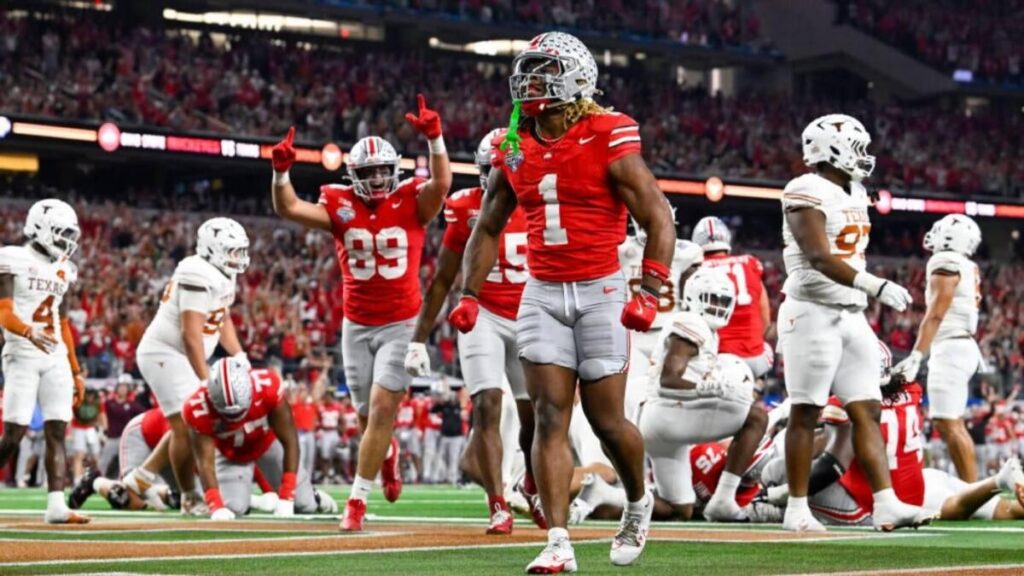Urban Meyer stood in the north end zone just beyond the goalpost at the Rose Bowl, far enough away from the Ohio State sideline not to be a distraction. And as the final seconds ticked off the clock in Pasadena, he was a witness to Big Ten football at its finest in the College Football Playoff era as a loaded No. 8 seed dismantled a previously unbeaten conference champion.
Picasso couldn’t have painted a more complete masterpiece in the weeks that followed. Ohio State’s three-touchdown win over Oregon preceded a takedown of SEC runner-up Texas. That momentum flowed into the Buckeyes’ national title victory against Notre Dame — a team that ousted SEC champion Georgia the week prior.
For good measure, Ohio State had also kicked off its unprecedented postseason run with a beatdown of 10-win SEC stalwart Tennessee.
The Big Ten’s 2024 CFP run was the peak moment of a process that began two years prior when Michigan stopped Nick Saban and Alabama at the goal line on the same turf en route — ending the SEC’s multi-year reign atop the sport.
Saban stepped away from coaching shortly thereafter and the SEC has no title trophies since.
“You know what the SEC’s done? It’s raised the level,” Urban Meyer said this week on Another Dooley Noted podcast. “But the Big Ten has passed the SEC at the upper part. If you would have told me that 10 years ago, I would’ve said it’s not even close. Because it’s not.”
Meyer’s not-so-hot-take may have caused a stir in the South, but he’s right. Heading into the 2025 season, there three Big Ten teams with preseason win totals at 10.5, according to FanDuel Sportsbook. Meanwhile, no SEC team is projected to win double digit games.
Meyer, who won two national championships at Florida and another at Ohio State, said the narrative began to change when the Big Ten started acquiring top-end players in recruiting.
“When I first got to the Big Ten, even Shelley (Meyer) said, ‘What in the world? This is a slow man’s game up here,’ and I like to think that the Buckeyes really changed that,” Meyer said. “Then everyone else started investing in their schools. And started recruiting the best player, not just the footprint. As a result, the Wolverine team two years ago was one of the best teams I’ve seen. The Buckeyes team this year is one of the best I’ve ever seen. You’re seeing Penn State and some of these teams have great success.”
Ohio State and Oregon met twice last year, and both games were littered with NFL Draft prospects. Penn State quarterback Drew Allar could be the No. 1 overall pick in the 2026 NFL Draft, making him the first Big Ten player to do so since Illinois’ Jeff George got the call in 1990. Michigan flipped Bryce Underwood — the No. 1 overall player in the 2025 cycle — from LSU with a lucrative NIL package.
Buckeyes wideout Jeremiah Smith is on the Heisman shortlist after a standout freshman season and is hoping to become the first pass-catcher to win the award since Alabama’s Devonta Smith in 2020.
As noted by Meyer, these kinds of things weren’t happening during SEC supremacy at the top of the sport previously in the playoff era. Times are changing — the Big Ten is nearing $1 billion in revenue to lead college football and there’s five programs with legitimate playoff hopes when the season begins in a few months.
SEC commissioner Greg Sankey will still have plenty to boast about during his opening remarks in Atlanta this summer, but the first time in more than a decade, the SEC is not top dog any longer.
Read the full article here



